Homemade Camera Rig Takes Stunning Close-up Pictures Of Snowflakes

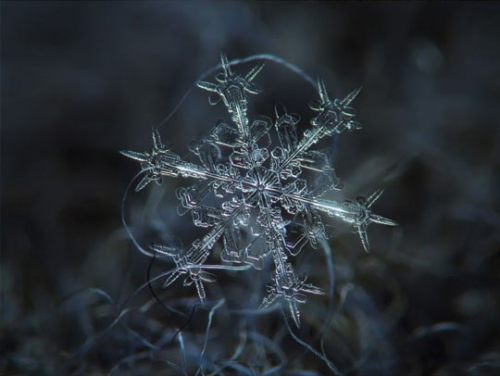
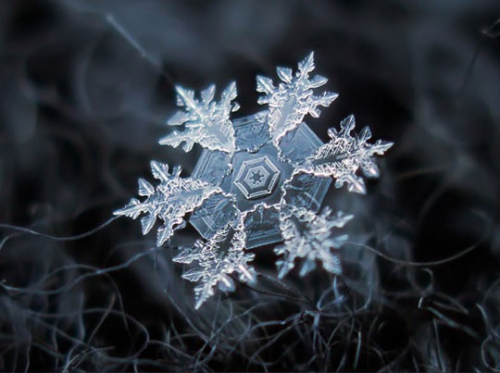
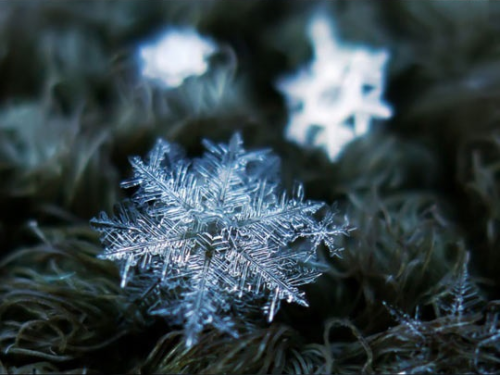
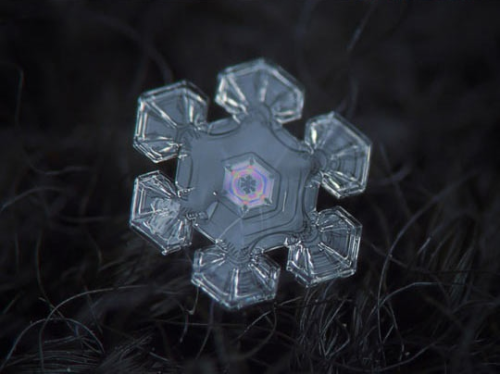

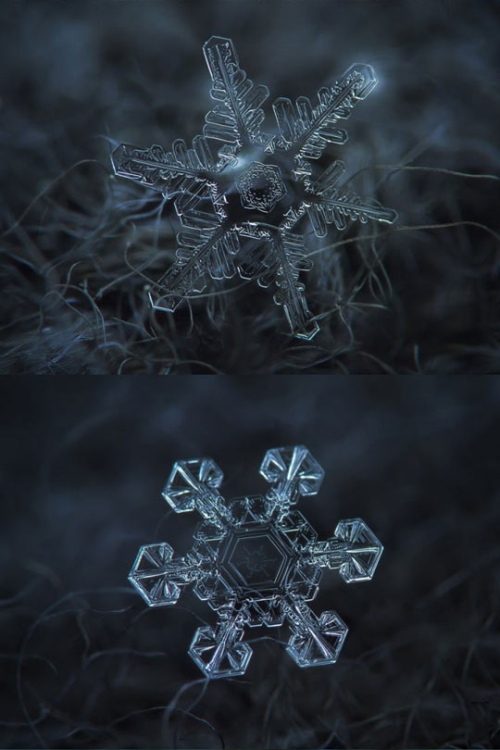



Homemade camera rig takes stunning close-up pictures of snowflakes
More Posts from Smartler and Others
Water on Mars!

Did you hear? New findings from our Mars Reconnaissance Orbiter (MRO) provide the strongest evidence yet that liquid water flows intermittently on present-day Mars.
Using an imaging spectrometer on MRO, we found hydrated minerals on slopes where mysterious streaks are seen on Mars. One thing that researchers noticed was that the darkish streaks appear to ebb and flow over time. During warm seasons, they darken and then fade in cooler seasons.

When discovered in 2010, these downhill flows known as recurring slope lineae (RSL) were thought to be related to liquid water. With the recent spectral detection of molecular water, we’re able to say it’s likely a shallow subsurface flow explains the darkening.
Mars is so cold, how could liquid water flow there? Great question! Since this liquid water is briny, the freezing point would be lower than that of pure water. Also, these saline slopes appear on Mars when temperatures are above minus 10 degrees Fahrenheit (minus 23 Celsius).
The dark, narrow streaks flowing downhill in the below image are roughly the length of a football field.

So there’s water, but how much? Currently we think this area has a very small amount of water, probably just enough to wet the top layer of the surface of Mars. The streaks are around four to five meters wide and 200 to 300 meters long.
Could humans drink this water? The salts in the water appear to be perchlorates, so you probably wouldn’t want to drink the water. It would most likely be very salty and would need to be purified before human consumption.
Perchlorate…What is that? A perchlorate is a salt that absorbs water from the air. Learn more about how it’s helping us unlock the mysteries of Mars in this video:
What’s next? We want to look for more locations where brine flows may occur. We have only covered 3% of Mars at resolutions high enough to see these features.
For more information on the Mars announcement, visit our Journey to Mars landing page. There is also a full recap of the press conference HERE, and a short recap below.
Make sure to follow us on Tumblr for your regular dose of space: http://nasa.tumblr.com
Gotta love science ❤️









– Isaac Asimov, 1922 - 1992
Reblog If You Can Take Off Your Bra Without Taking Your Shirt Off.
Submitted by @asapscience
Science is so amazing, but it’s being de-funded around the world. We hope to make a difference with this video:
Your sharing is greatly appreciated.

A brontosaurus was carved out of pumpkins.
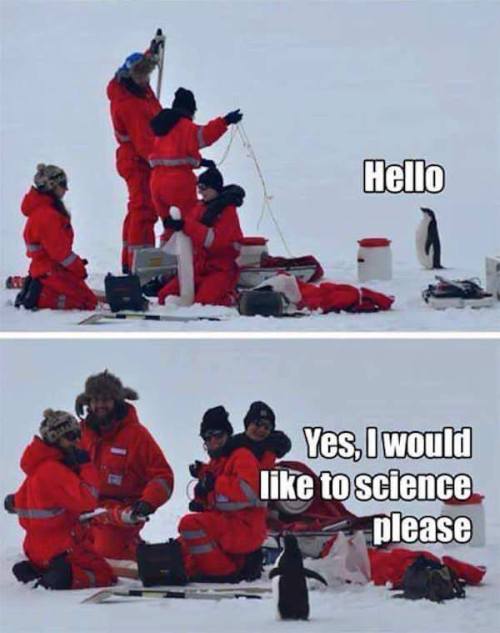




On Tuesday, September 15th, at 5 p.m. ET, astronauts Serena Auñón, Cady Coleman, Samantha Cristoforetti, plus NASA chief scientist Ellen Stofan will be stopping by Skunk Bear HQ – and I’ll be asking them your questions live on Periscope and SnapChat (user: nprnews)!
Submit your questions here or tweet #NPRSpaceJam.
Cady Coleman has been to space three times, once spending 158 days aboard the International Space Station. While on earth, she set several endurance and tolerance records when she participated in tests of new equipment. She plays flute in Bandella, a musical group made up of astronauts. Here, I’ve depicted her zero-gravity hair-do.
Serena Auñón hasn’t been to space … yet. She was selected in 2009 as a member of the 20th NASA astronaut class. She has a bachelors degree in electrical engineering, a doctorate in medicine, and a masters in public health.
Samantha Cristoforetti is the first Italian woman in space, the woman who has stayed in space the longest (199 days) and the first person to brew espresso in space. She’s a fighter pilot in the Italian Air Force and speaks fluent Italian, English, Russian, German, and French.
Ellen Stofan is the Chief Scientist of NASA, advising the administrator on all things scientific. She is especially interested in the geology of other planets.

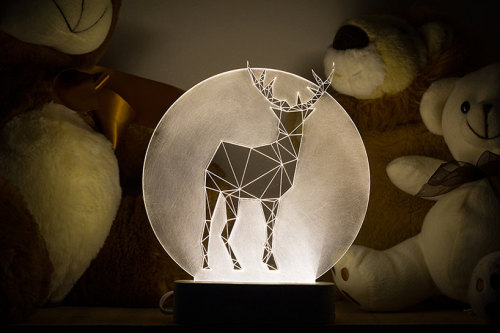


Sturlesi Design creates modern lamps that are simultaneously practical home decor and art objects. Their minimalist design reimagines animals as angular, geometric shapes, with LED lights hidden in their concrete bases. When not in use, these devices look like tiny statues—you’d never realize they’re powerful lamps. See more in the Sturlesi Design Etsy shop.










Portraits of Children Around the World and Where They Sleep
Travel Posters of Fantastic Excursions
What would the future look like if people were regularly visiting to other planets and moons? These travel posters give a glimpse into that imaginative future. Take a look and choose your destination:
The Grand Tour

Our Voyager mission took advantage of a once-every-175-year alignment of the outer planets for a grand tour of the solar system. The twin spacecraft revealed details about Jupiter, Saturn, Uranus and Neptune – using each planet’s gravity to send them on to the next destination.
Mars

Our Mars Exploration Program seeks to understand whether Mars was, is, or can be a habitable world. This poster imagines a future day when we have achieved our vision of human exploration of the Red Planet and takes a nostalgic look back at the great imagined milestones of Mars exploration that will someday be celebrated as “historic sites.”
Earth

There’s no place like home. Warm, wet and with an atmosphere that’s just right, Earth is the only place we know of with life – and lots of it. Our Earth science missions monitor our home planet and how it’s changing so it can continue to provide a safe haven as we reach deeper into the cosmos.
Venus

The rare science opportunity of planetary transits has long inspired bold voyages to exotic vantage points – journeys such as James Cook’s trek to the South Pacific to watch Venus and Mercury cross the face of the sun in 1769. Spacecraft now allow us the luxury to study these cosmic crossings at times of our choosing from unique locales across our solar system.
Ceres

Ceres is the closest dwarf planet to the sun. It is the largest object in the main asteroid belt between Mars and Jupiter, with an equatorial diameter of about 965 kilometers. After being studied with telescopes for more than two centuries, Ceres became the first dwarf planet to be explored by a spacecraft, when our Dawn probe arrived in orbit in March 2015. Dawn’s ongoing detailed observations are revealing intriguing insights into the nature of this mysterious world of ice and rock.
Jupiter

The Jovian cloudscape boasts the most spectacular light show in the solar system, with northern and southern lights to dazzle even the most jaded space traveler. Jupiter’s auroras are hundreds of times more powerful than Earth’s, and they form a glowing ring around each pole that’s bigger than our home planet.
Enceladus

The discovery of Enceladus’ icy jets and their role in creating Saturn’s E-ring is one of the top findings of the Cassini mission to Saturn. Further Cassini discoveries revealed strong evidence of a global ocean and the first signs of potential hydrothermal activity beyond Earth – making this tiny Saturnian moon one of the leading locations in the search for possible life beyond Earth.
Titan

Frigid and alien, yet similar to our own planet billions of years ago, Saturn’s largest moon, Titan has a thick atmosphere, organic-rich chemistry and surface shaped by rivers and lakes of liquid ethane and methane. Our Cassini orbiter was designed to peer through Titan’s perpetual haze and unravel the mysteries of this planet-like moon.
Europa

Astonishing geology and the potential to host the conditions for simple life making Jupiter’s moon Europa a fascinating destination for future exploration. Beneath its icy surface, Europa is believed to conceal a global ocean of salty liquid water twice the volume of Earth’s oceans. Tugging and flexing from Jupiter’s gravity generates enough heat to keep the ocean from freezing.
You can download free poster size images of these thumbnails here: http://www.jpl.nasa.gov/visions-of-the-future/
Make sure to follow us on Tumblr for your regular dose of space: http://nasa.tumblr.com
-
 mozzaya liked this · 1 month ago
mozzaya liked this · 1 month ago -
 injunade liked this · 1 month ago
injunade liked this · 1 month ago -
 persephone73 liked this · 1 month ago
persephone73 liked this · 1 month ago -
 punk-pebbles liked this · 2 months ago
punk-pebbles liked this · 2 months ago -
 a10wea liked this · 2 months ago
a10wea liked this · 2 months ago -
 ichigosasaki liked this · 3 months ago
ichigosasaki liked this · 3 months ago -
 masterofnone72 liked this · 3 months ago
masterofnone72 liked this · 3 months ago -
 wallsarecrumbling reblogged this · 3 months ago
wallsarecrumbling reblogged this · 3 months ago -
 darthbloodorange reblogged this · 3 months ago
darthbloodorange reblogged this · 3 months ago -
 kudsir liked this · 3 months ago
kudsir liked this · 3 months ago -
 hill-art02 liked this · 4 months ago
hill-art02 liked this · 4 months ago -
 aaaaaaaaaaa13478 liked this · 4 months ago
aaaaaaaaaaa13478 liked this · 4 months ago -
 terrablighter liked this · 4 months ago
terrablighter liked this · 4 months ago -
 blood-orange517 liked this · 5 months ago
blood-orange517 liked this · 5 months ago -
 caden001 liked this · 5 months ago
caden001 liked this · 5 months ago -
 quietcairn liked this · 5 months ago
quietcairn liked this · 5 months ago -
 yodawashere reblogged this · 5 months ago
yodawashere reblogged this · 5 months ago -
 lunar--ghost liked this · 5 months ago
lunar--ghost liked this · 5 months ago -
 rosesbblog liked this · 5 months ago
rosesbblog liked this · 5 months ago -
 iisgremlin reblogged this · 5 months ago
iisgremlin reblogged this · 5 months ago -
 iisgremlin liked this · 5 months ago
iisgremlin liked this · 5 months ago -
 nuttyinternetsheep liked this · 5 months ago
nuttyinternetsheep liked this · 5 months ago -
 merlin513 liked this · 6 months ago
merlin513 liked this · 6 months ago -
 meret118 reblogged this · 6 months ago
meret118 reblogged this · 6 months ago -
 sparkley-bones liked this · 6 months ago
sparkley-bones liked this · 6 months ago -
 gen-x-catmom reblogged this · 6 months ago
gen-x-catmom reblogged this · 6 months ago -
 causing-chaosss liked this · 6 months ago
causing-chaosss liked this · 6 months ago -
 sobearwolf liked this · 6 months ago
sobearwolf liked this · 6 months ago -
 marionette1212 reblogged this · 6 months ago
marionette1212 reblogged this · 6 months ago -
 gen-x-catmom liked this · 6 months ago
gen-x-catmom liked this · 6 months ago -
 lightbeamtraveler liked this · 6 months ago
lightbeamtraveler liked this · 6 months ago -
 literallyanythingabouteverything reblogged this · 6 months ago
literallyanythingabouteverything reblogged this · 6 months ago -
 literallyanythingabouteverything liked this · 6 months ago
literallyanythingabouteverything liked this · 6 months ago -
 joia-pra-alegria liked this · 6 months ago
joia-pra-alegria liked this · 6 months ago -
 winterbirch liked this · 7 months ago
winterbirch liked this · 7 months ago -
 annaoayin liked this · 7 months ago
annaoayin liked this · 7 months ago -
 anna35foc liked this · 8 months ago
anna35foc liked this · 8 months ago -
 clayerotica liked this · 8 months ago
clayerotica liked this · 8 months ago -
 cosandarts reblogged this · 8 months ago
cosandarts reblogged this · 8 months ago -
 louis-der-ter liked this · 8 months ago
louis-der-ter liked this · 8 months ago -
 medjed liked this · 8 months ago
medjed liked this · 8 months ago -
 aesthetically-ts reblogged this · 8 months ago
aesthetically-ts reblogged this · 8 months ago -
 littlevnavy liked this · 8 months ago
littlevnavy liked this · 8 months ago -
 littlevnavy reblogged this · 8 months ago
littlevnavy reblogged this · 8 months ago -
 zanyruinspaper reblogged this · 8 months ago
zanyruinspaper reblogged this · 8 months ago -
 annita89v9ul06h liked this · 8 months ago
annita89v9ul06h liked this · 8 months ago